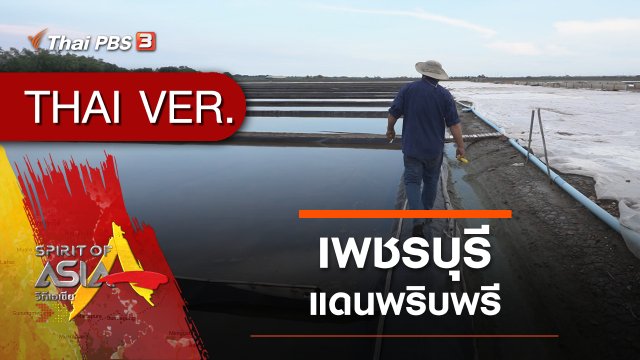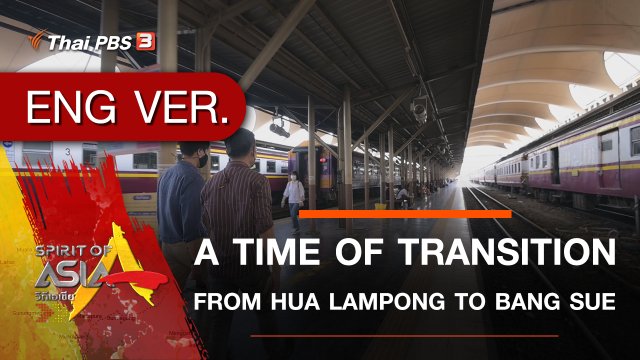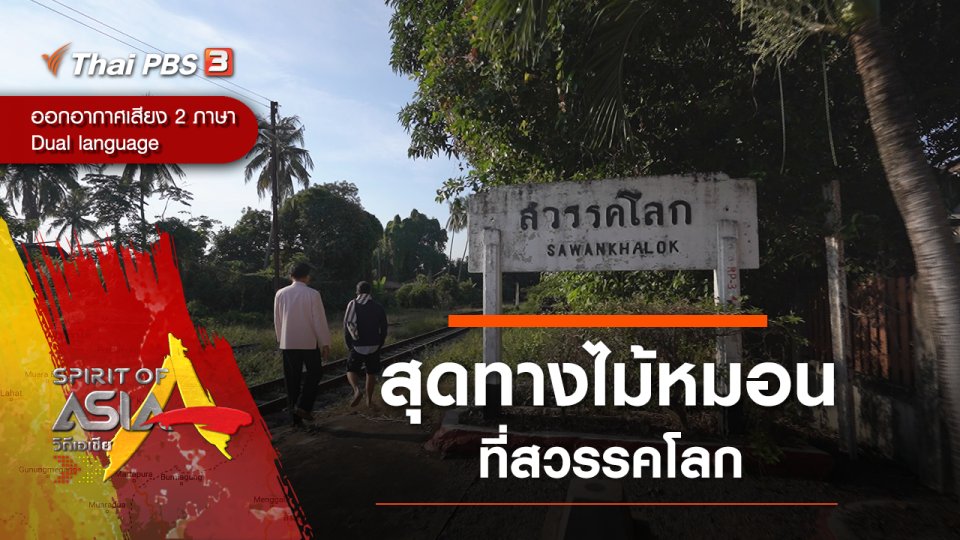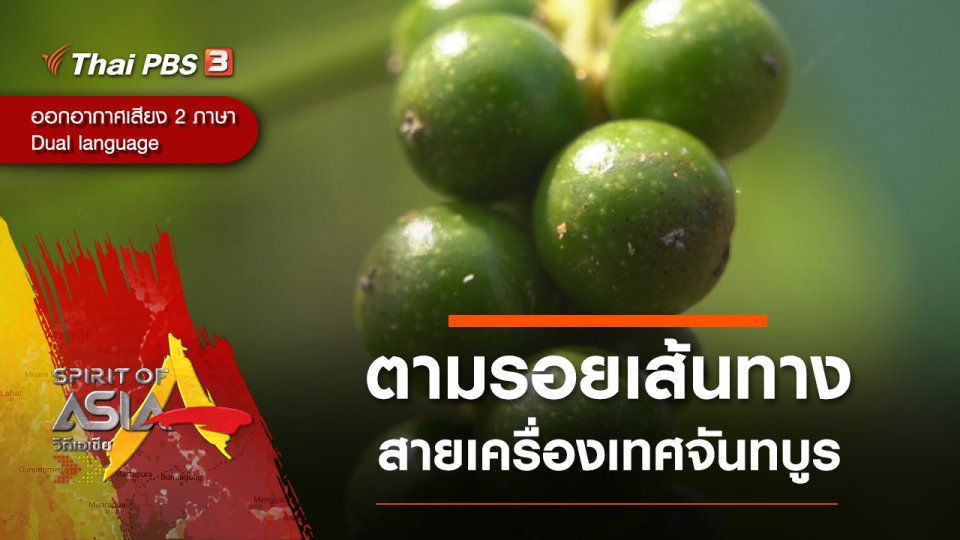สิ้นเสียงป่าลั่นในเมืองแพร่
สิ้นเสียงป่าลั่นในเมืองแพร่
ทางรถไฟเชื่อมอาเซียนสู่ทวีปอื่น มิใช่เป็นอภิมหาโปรเจกต์ที่เพิ่งจะเกิดขึ้น หากย้อนกลับไปดูแบบพิมพ์เขียวที่อังกฤษร่างไว้ในช่วงล่าอาณานิคม มีแผนการที่จะวางไม้หมอนสร้างทางรถไฟจากเมียนมา เชื่อมต่อดินแดนทางภาคเหนือของประเทศไทย นอกเหนือจากจุดประสงค์ทางยุทธศาสตร์แล้ว ยังรุกคืบที่จะลำเลียงเอาทรัพยากรป่าไม้จากดินแดนไม้สักผืนใหญ่ของโลก เพื่อเป็นสินค้าส่งออกราคาแพงส่งกลับไปยังประเทศในอาณานิคม ที่ไหนบ้างมีทรัพยากรไม้มากมายขนาดนั้น
สมัยหนึ่งเมียนมาได้ชื่อว่ามีป่าไม้สักทองผืนใหญ่ที่สุดในภูมิภาค และอันตรธานหายไปชั่วไม่กี่ปี แชมป์รายถัดมาคือประเทศไทย ไม่นานนัก "ไม้สัก" สินค้าส่งออกอันดับ 1 ร่วงตกอันดับ กลายเป็นทรัพยากรที่สูญพันธุ์ เหลือไว้เพียงป่าสักที่เพิ่งจะเริ่มปลูกเมื่อไม่กี่สิบปีที่ผ่านมา
ทริปนี้เราจะไปเยือนถิ่นไม้สัก โดยไปตามรอยเจ็ดมหาอำนาจในจังหวัดแพร่ ที่มีทรัพยากรป่าไม้เป็นทรัพย์สมบัติและมรดกอาชีพของผู้คนจวบจนวันนี้
THE END OF THE WOODLANDS IN PHRAE
The transcontinental railway network linking ASEAN with ports in other continents is not an idea conceived in recent times. For if we refer back to historical records, we will find the green print plans drafted by the British during the colonial era. These were plans to build a railway network linking Myanmar to the northern region of Thailand. The importance of railways during that chapter in history was not only focused on their economic impact. Railways served as key sites in the institution of colonial political economy. One of the world’s teak forest regions became a major site of contestation, falling deeply into the game of colonial occupation and foreign investment, due to the increasing global demand for teak. Teak was an expensive exported product. And where else in the world would the colonialists source these products in such great abundance?
There was a time when Myanmar was known to have the most teak forested land in the region. But due to over-harvesting, the majority of teak stocks were exhausted within a matter of a few years. The country with the second prize in teak forested land was Siam. It didn’t take long for teak to fall from the number one exported product to a near-extinct resource. All that is now left are the teak plantations which are only a few decades old.
On this trip, we follow in the footsteps of the seven super-powers that occupied Phrae Province during one of the most intense periods of regional history. The people of Phrae continue to use their forest resources which remain an important part of their socio-economic and professional heritage to this day.
ติดตามเรื่องราวได้ใน Spirit of Asia ตอน สิ้นเสียงป่าลั่นในเมืองแพร่ วันอาทิตย์ที่ 6 กุมภาพันธ์ 2565 เวลา 16.30 - 17.00 น. ทางไทยพีบีเอส รับชมออนไลน์ทาง www.thaipbs.or.th/Live
Spirit of Asia

เพชรบุรี แดนพริบพรี
21 พ.ย. 64
PHETCHABURI : THE LAND OF PRIB PRI
21 พ.ย. 64
วันเปลี่ยนผ่าน หัวลำโพงสู่บางซื่อ
28 พ.ย. 64
A TIME OF TRANSITION : FROM HUA LAMPONG TO BANG SUE
28 พ.ย. 64
แหล่งวาณิชริมทาง สายรางคู่ชีวิต
5 ธ.ค. 64
TRADING ZONES ALONG RAILWAY LINES AND LIFE LINES
5 ธ.ค. 64
ชุมชนรถไฟสายใยฝั่งธนบุรี
12 ธ.ค. 64
THE TRAIN COMMUNITY OF THONBURI
12 ธ.ค. 64
ขอทางสะดวกไปสวี หลังสวน
19 ธ.ค. 64
TRAIN TOKENS TO SAWI AND LUNG SUAN
19 ธ.ค. 64
อาภากร ดวงตะวันที่ไม่เคยสิ้นแสง
26 ธ.ค. 64
ABHAKARA : THE SUN WHOSE LIGHT NEVER FADES
26 ธ.ค. 64
แสงเยียวยาแห่งอาภากร
2 ม.ค. 65
แสงศรัทธาเสด็จเตี่ย
9 ม.ค. 65
ชีวมณฑลบนดอยหลวงเชียงดาว
16 ม.ค. 65
จากเชียงดาวสู่ชาวดิน
23 ม.ค. 65
แดนเจ็ดมหาอำนาจแพร่
30 ม.ค. 65
สิ้นเสียงป่าลั่นในเมืองแพร่
6 ก.พ. 65
สุดทางไม้หมอนที่สวรรคโลก
13 ก.พ. 65
บ้านฉันทำเองที่สวรรคโลก
20 ก.พ. 65
กุดจิก - โคกกรวด ชุมชนรถไฟในวันเปลี่ยนผ่าน
6 มี.ค. 65
เลียบรางร้อยอดีตคนสูงเนิน
13 มี.ค. 65
เดินทางข้ามเวลารถไฟสายอีสาน
20 มี.ค. 65
ตามรอยเส้นทางสายเครื่องเทศจันทบูร
27 มี.ค. 65
ความบริบูรณ์จากป่าสู่ลำน้ำจันทบูร
3 เม.ย. 65
จันทบูรโอชา กรุ่นกลิ่นที่ไม่จางหาย
10 เม.ย. 65
ยลวิถีรัตนโกสินทร์ผ่านวรรณกรรม “สี่แผ่นดิน”
17 เม.ย. 65
มองกรุงเทพฯ จากชีวิตนอกวังของแม่พลอย
24 เม.ย. 65
ศรัทธาโพ้นทะเล
1 พ.ค. 65
ศรัทธาลูกผสม
8 พ.ค. 65
Spirit of Asia

เพชรบุรี แดนพริบพรี
21 พ.ย. 64
PHETCHABURI : THE LAND OF PRIB PRI
21 พ.ย. 64
วันเปลี่ยนผ่าน หัวลำโพงสู่บางซื่อ
28 พ.ย. 64
A TIME OF TRANSITION : FROM HUA LAMPONG TO BANG SUE
28 พ.ย. 64
แหล่งวาณิชริมทาง สายรางคู่ชีวิต
5 ธ.ค. 64
TRADING ZONES ALONG RAILWAY LINES AND LIFE LINES
5 ธ.ค. 64
ชุมชนรถไฟสายใยฝั่งธนบุรี
12 ธ.ค. 64
THE TRAIN COMMUNITY OF THONBURI
12 ธ.ค. 64
ขอทางสะดวกไปสวี หลังสวน
19 ธ.ค. 64
TRAIN TOKENS TO SAWI AND LUNG SUAN
19 ธ.ค. 64
อาภากร ดวงตะวันที่ไม่เคยสิ้นแสง
26 ธ.ค. 64
ABHAKARA : THE SUN WHOSE LIGHT NEVER FADES
26 ธ.ค. 64
แสงเยียวยาแห่งอาภากร
2 ม.ค. 65
แสงศรัทธาเสด็จเตี่ย
9 ม.ค. 65
ชีวมณฑลบนดอยหลวงเชียงดาว
16 ม.ค. 65
จากเชียงดาวสู่ชาวดิน
23 ม.ค. 65
แดนเจ็ดมหาอำนาจแพร่
30 ม.ค. 65
สิ้นเสียงป่าลั่นในเมืองแพร่
6 ก.พ. 65
สุดทางไม้หมอนที่สวรรคโลก
13 ก.พ. 65
บ้านฉันทำเองที่สวรรคโลก
20 ก.พ. 65
กุดจิก - โคกกรวด ชุมชนรถไฟในวันเปลี่ยนผ่าน
6 มี.ค. 65
เลียบรางร้อยอดีตคนสูงเนิน
13 มี.ค. 65
เดินทางข้ามเวลารถไฟสายอีสาน
20 มี.ค. 65
ตามรอยเส้นทางสายเครื่องเทศจันทบูร
27 มี.ค. 65
ความบริบูรณ์จากป่าสู่ลำน้ำจันทบูร
3 เม.ย. 65
จันทบูรโอชา กรุ่นกลิ่นที่ไม่จางหาย
10 เม.ย. 65
ยลวิถีรัตนโกสินทร์ผ่านวรรณกรรม “สี่แผ่นดิน”
17 เม.ย. 65
มองกรุงเทพฯ จากชีวิตนอกวังของแม่พลอย
24 เม.ย. 65
ศรัทธาโพ้นทะเล
1 พ.ค. 65
ศรัทธาลูกผสม
8 พ.ค. 65




















